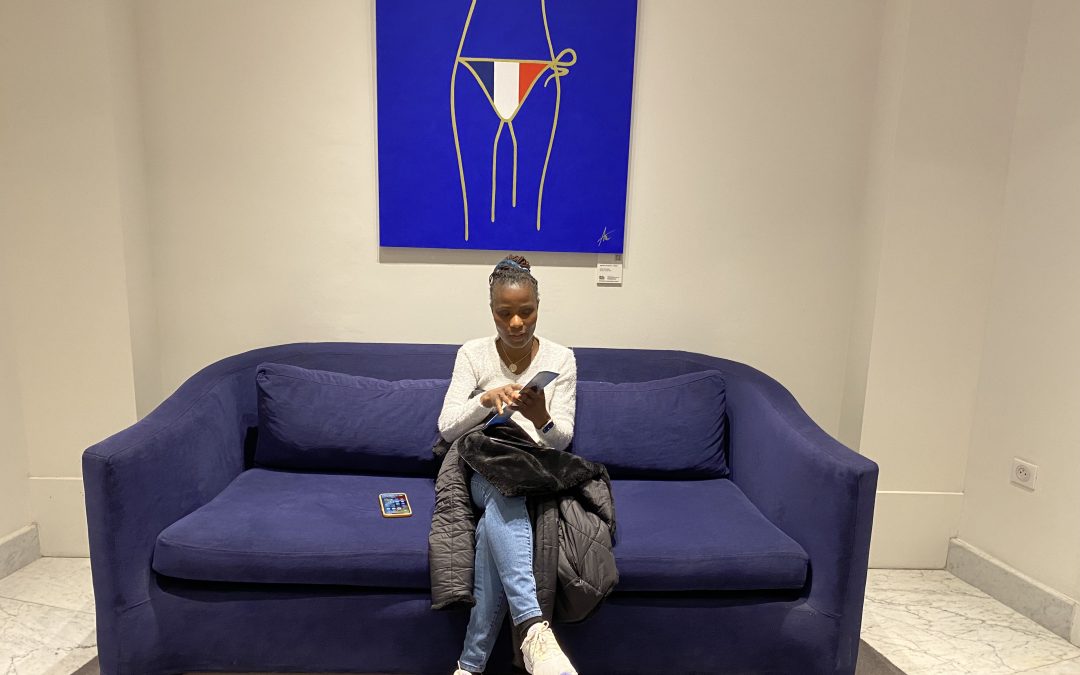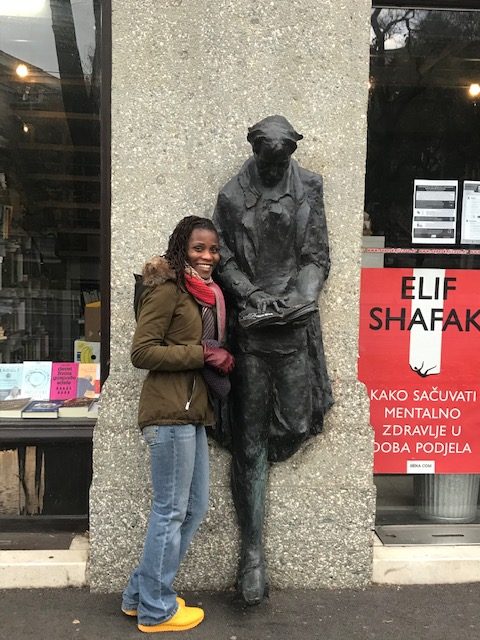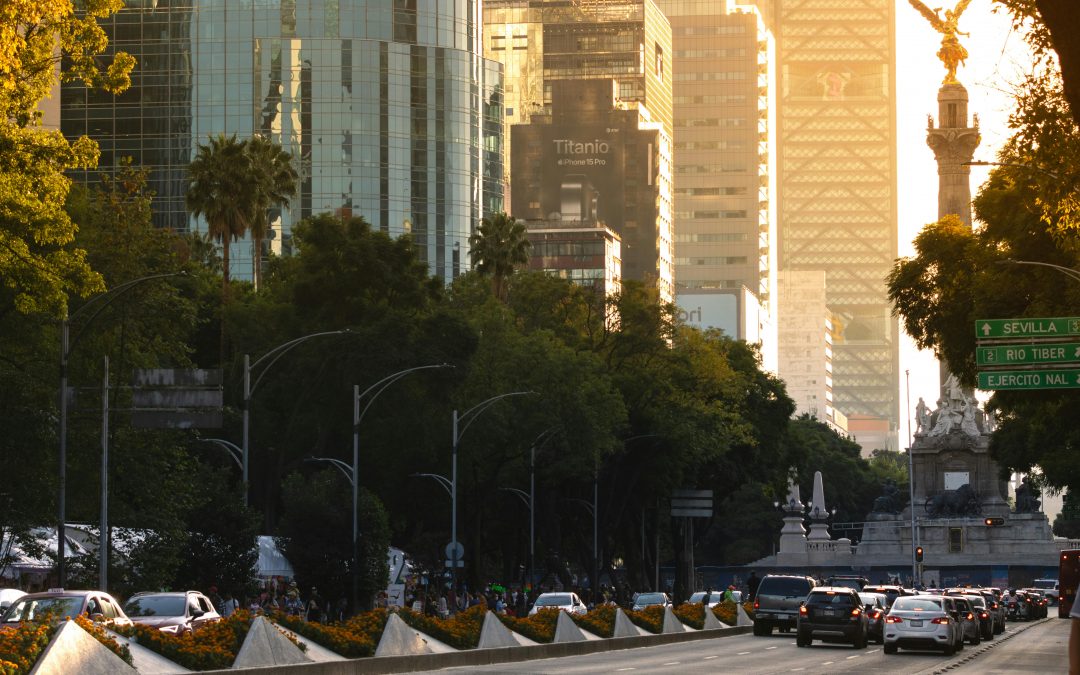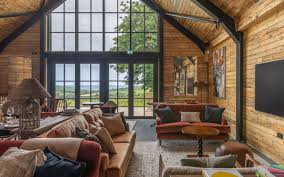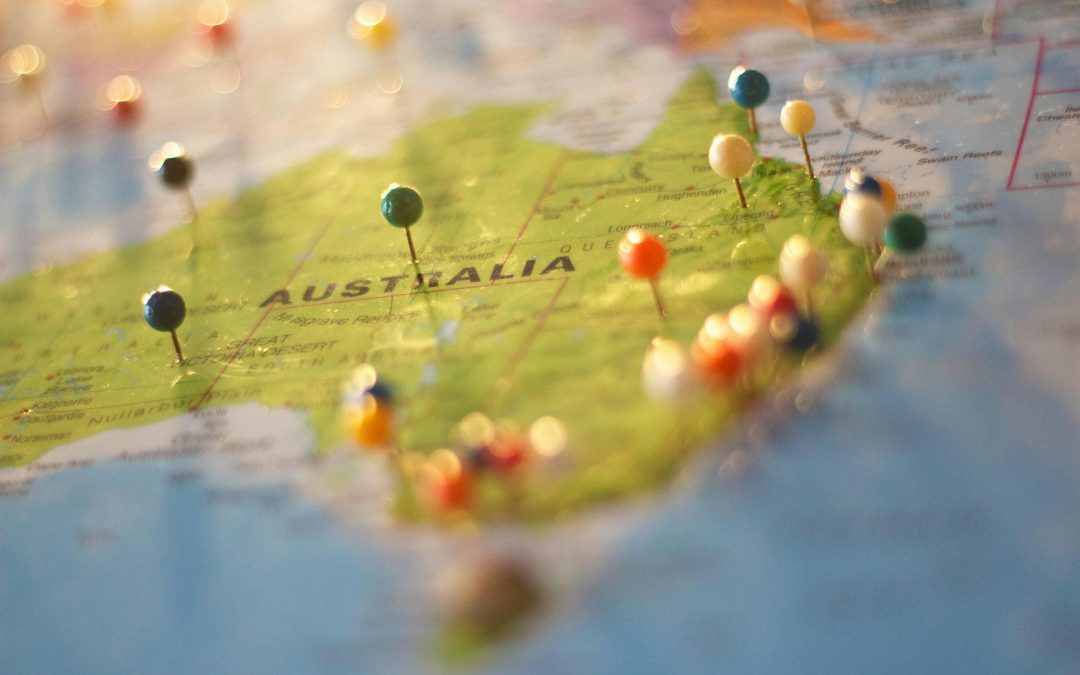Des wadis ocre d'Arabie aux lacs de Nouvelle-Zélande alimentés par des glaciers, cet ouvrage est votre guide définitif pour choisir, planifier et savourer les voyages les plus gratifiants de 2025, avec un mélange d'icônes classiques et de nouvelles suggestions de la rédaction.
Comment cette liste a été construite : J'ai croisé les références de la Perspectives les rubriques 2025 de la famille Voyage (qui mettent l'accent sur des guides de destination approfondis et sur le terrain) avec des synthèses mondiales indépendantes et des rapports sur les tendances afin de trianguler les deux timing et qualité de l'expérience. Le résultat favorise les saisons intermédiaires, les expériences inédites et les lieux qui concilient infrastructure et authenticité.
1) Oman - Le soft power de l'Arabie en matière d'hospitalité
Pourquoi partir maintenant ?
Oman est ce à quoi ressemblait une grande partie de la péninsule arabique avant les mégaprojets : des villes fortifiées tranquilles, des marchés à l'encens et des wadis que l'on entend avant de les voir. Entre la corniche de Mascate en bord de mer, l'île d'Oman et la ville d'Oman, il n'y a qu'un pas. Monts Hajar (Jebel Akhdar/Jebel Shams), et les Sables de Wahiba, La variété du pays récompense une semaine tranquille plutôt qu'une escapade en ville. Contrairement à certains de ses voisins, le développement d'Oman s'est orienté vers la construction d'immeubles. luxe durable et des séjours dans le désert ou dans des lodges à faible impact, idéaux pour les voyageurs qui souhaitent une immersion sans spectacle. [outlooktravelmag.com]
Meilleur moment
D'octobre à avril, les nuits sont plus fraîches dans les montagnes et le désert. L'été est intense dans l'intérieur du pays.
Expériences essentielles
- Wadi Shab/Wadi Tiwi : piscines de canyon, courtes randonnées, cascade cachée dans une grotte.
- Marché du vendredi de Nizwa : chèvres, dattes et argent - le vieil Oman en couleurs.
- Terrasses du Jebel Akhdar : villages de grenades et d'eau de rose avec éco-lodges perchés sur des oueds. [outlooktravelmag.com]
Micro-itinéraire de 2 jours
Jour 1 : Grande mosquée Sultan Qaboos de Mascate → promenade sur la Corniche de Mutrah au coucher du soleil → mezze de fruits de mer.
Jour 2 : A l'aube, route vers le souk de Nizwa → promenade dans le falaj de Birkat Al Mouz → points de vue du Jebel Akhdar → observation des étoiles depuis l'hôtel situé au sommet d'une falaise.
Voyager malin
La conduite autonome est facile ; les routes sont excellentes. Prévoir des fenêtres de conduite prudentes sur les routes de montagne après la tombée de la nuit.
2) Îles Galápagos, Équateur - Evolution, Unplugged
Pourquoi partir maintenant ?
Le Galápagos sont les rares endroits où la curiosité des animaux sauvages l'emporte sur l'emploi du temps des humains. Les mois de septembre et d'octobre peuvent être marqués par des mers plus fraîches et des températures plus élevées. moins de monde, Les eaux riches en nutriments stimulent l'activité (pensez aux pingouins qui passent devant vos nageoires). Les itinéraires de croisière relient les îles inhabitées, tandis que les séjours à terre sur Santa Cruz/San Cristóbal conviennent aux voyageurs qui préfèrent dormir à terre. [outlooktravelmag.com]
Meilleur moment
Toute l'année, avec deux saisons. La saison fraîche et sèche (juin-novembre) est idéale pour les personnes peu nombreuses et la vie marine active.
Expériences essentielles
- Plongée en apnée avec les otaries au Kicker Rock ou à Los Túneles.
- Randonnée dans les caldeiras volcaniques sur Isabela ; rencontre avec des tortues géantes dans des centres d'élevage.
- Ciel nocturne depuis le pont des bateaux - aucune pollution lumineuse. [outlooktravelmag.com]
Voyager malin
Les permis, les règles du parc et le nombre de guides sont stricts (et c'est tant mieux !). Réservez tôt les opérateurs agréés ; vérifiez les itinéraires pour inclure les espèces que vous devez absolument voir.
3) Luxembourg - L'Europe de poche avec la polonaise des grandes villes
Pourquoi partir maintenant ?
Ville de Luxembourg La ville d'Amsterdam réunit en un week-end des fortifications médiévales, des ponts aériens, des gorges verdoyantes et une scène gastronomique véritablement cosmopolite. Aventurez-vous à l'est jusqu'à Mullerthal, Les gorges de grès et les sentiers moussus des contes de fées font de cette région la “petite Suisse”. C'est un complément idéal à une boucle Benelux/Alsace ou une base peu stressante, avec des transports publics de qualité et un multilinguisme aisé. [outlooktravelmag.com]
Meilleur moment
Avril-juin et septembre-octobre pour un air vivifiant et des forêts colorées.
Expériences essentielles
- Vieux quartiers de l'UNESCO et Casemates du Bock.
- Echternach-Mullerthal circuits de randonnée.
- Dégustations de riesling le long de la Moselle. [outlooktravelmag.com]
Voyager malin
Les transports publics sont gratuit dans tout le pays-Un plaisir pour les randonneurs d'un jour. Réservez vos week-ends à l'avance ; les chambres sont limitées dans la campagne.
4) Namibie - L'anatomie du silence
Pourquoi partir maintenant ?
La Namibie est un chef-d'œuvre de l'Afrique en matière d'espace négatif : sans fin Désert de Namibie dunes, vallées fossilisées, côtes naufragées, et Etosha’Le tourisme se concentre sur les petits camps avec des guides de qualité, dont la densité est volontairement faible pour protéger les écosystèmes fragiles. Le tourisme s'appuie sur de petits camps avec des guides exceptionnels, dont la densité est volontairement faible pour protéger les écosystèmes fragiles. [outlooktravelmag.com]
Meilleur moment
Mai-octobre pour la faune et la flore de la saison sèche ; avril-novembre pour la douceur de l'intersaison.
Expériences essentielles
- Sossusvlei/Deadvlei : randonnée sur la dune “Big Daddy” à l'aube ; photographie des silhouettes d'épines de chameau.
- Excursion en avion sur la côte des squelettes : lire les cicatrices de naufrage depuis le ciel.
- Points d'eau d'Etosha au crépuscule - des bancs de parc comme des sièges de théâtre. [outlooktravelmag.com]
Voyager malin
La conduite autonome est populaire, mais les distances sont grandes ; prévoyez du carburant et de l'eau en plus. Réservez un safari hybride (lodge + mobile) pour concilier confort et accessibilité.
5) Grenade - Les Caraïbes avec des racines qui se manifestent
Pourquoi partir maintenant ?
Grenade résiste au scénario à l'emporte-pièce des Caraïbes. On y trouve des plages classiques, mais aussi des criques de mangrove, des forêts tropicales qui sentent le gâteau à la noix de muscade et des sourires authentiques au coin de la rue. C'est aussi une rampe de lancement pour les plongeurs : récifs, épaves, et les photogéniques Parc de sculptures sous-marines. [outlooktravelmag.com]
Meilleur moment
Décembre-avril (sec) ; mai-juin, la saison intermédiaire est magnifique et les tarifs sont plus avantageux.
Expériences essentielles
- Grand Anse au lever du soleil ; Gouyave poisson vendredi soir.
- Sentiers d'épices dans la forêt tropicale à l'intérieur des terres ; des domaines chocolatiers à siroter et à visiter.
- Plongée en apnée dans les sculptures au large de la baie de Molinière. [outlooktravelmag.com]
Voyager malin
La région est vallonnée : prévoyez un budget pour les taxis ou la location d'une voiture si vous souhaitez vous déplacer. Réservez de petites auberges ou des écolodges pour une ambiance communautaire.
6) Gibraltar - Un tour du monde en une seule chanson
Pourquoi partir maintenant ?
En partie forteresse, en partie réserve naturelle, Gibraltar est le lieu où une journée de marche passe du château mauresque aux tunnels de la Seconde Guerre mondiale et aux balcons méditerranéens. Les Le rocher’La chambre haute de l'Union européenne Macaques de Barbarie, On y trouve les primates les plus effrontés d'Europe et, par temps clair, la vue s'étend jusqu'à l'Afrique. Compact et accessible à pied, c'est un détour méditerranéen inhabituel qui s'associe facilement à Andalousie ou le Costa del Sol. [outlooktravelmag.com]
Meilleur moment
Mars-mai et septembre-novembre - températures agréables, moins de monde.
Expériences essentielles
- Étapes méditerranéennes randonnée.
- Grotte de Saint-Michel spectacle son et lumière.
- Château mauresque + tunnels de la Seconde Guerre mondiale pour une histoire qui s'inscrit dans le temps. [outlooktravelmag.com]
Voyager malin
Les délais d'attente à la frontière peuvent varier ; se munir d'un passeport même pour les excursions d'une journée au départ de l'Espagne. Réservez des entrées programmées pour les grottes/tunnels pendant les mois de pointe.
7) Montréal, Canada - Un moteur culturel quatre saisons
Pourquoi partir maintenant ?
Montréal mixe Façades de l'ancien monde avec des festivals indépendants, une gastronomie de pointe et des parcs reliés par des pistes cyclables au bord de la rivière. L'automne apporte l'air vivifiant, les marchés et les amateurs d'érable dans les Laurentides. Le bilinguisme de la ville et les mosaïques de quartiers (Plateau, Mile-End, Petite Bourgogne) la rendent infiniment explorable. [outlooktravelmag.com]
Meilleur moment
Septembre-octobre pour les couleurs ; juin-juillet pour les festivals.
Expériences essentielles
- Le Vieux-Montréal Promenade au lever du soleil ; spectacle de lumières de la basilique Notre-Dame.
- Marché Jean-Talon dégustations ; bagels Mile-End contre viande fumée.
- Mont-Royal marches au coucher du soleil ; randonnée pédestre sur le canal de Lachine. [outlooktravelmag.com]
Voyager malin
Achetez un laissez-passer OPUS de 3 jours et utilisez les vélos BIXI pour relier les quartiers entre eux.
8) Kyoto, Japon - Rituels entre les saisons
Pourquoi partir maintenant ?
Les cerisiers en fleurs du printemps sont peut-être célèbres, mais... Septembre en Kyoto Les temples sont plus calmes, les feuillages commencent à se déplacer subtilement et les quartiers traditionnels respirent sans se presser. Les festivals culturels reviennent, les salons de thé sont moins pressés et les premières saveurs d'automne apparaissent sur les menus kaiseki. [travelupo.com]
Meilleur moment
Fin septembre-novembre pour une architecture de couleurs automnales ; mars-avril si les fleurs ne sont pas négociables.
Expériences essentielles
- Fushimi Inari à l'aube ; Kiyomizu-dera terrasses au crépuscule.
- Cérémonie du thé en Gion; Arashiyama bambou un jour de semaine pluvieux.
- Excursions d'une journée à Uji (matcha) ou Nara (temples + cerfs). [travelupo.com]
Voyager malin
Utiliser le ICOCA carte de transport en commun ; réserver des temples avec des entrées chronométrées si possible ; apprendre trois phrases-sumimasen, arigatō, onegaishimasu-et regarder les portes s'ouvrir.
9) Santorin, Grèce - La caldeira en flou artistique
Pourquoi partir maintenant ?
En Septembre, Santorin porte toujours une lumière éclatante, mais perd le charme de l'été, où l'on est au coude à coude. Les Égée Les séjours au bord de la piscine, la saison des vendanges, les visites de vignobles et les villages au sommet des falaises, de l'hôtel de ville à l'hôtel de ville. Oia à Imerovigli, Le matin, l'enfant expire suffisamment pour que l'on entende à nouveau les cloches de l'église. [travelupo.com]
Meilleur moment
Mai-juin, septembre-octobre pour des raisons de climat et d'espace.
Expériences essentielles
- Randonnée Fira → Oia Le long du bord ; chronométrez l'arrivée pour le coucher du soleil.
- Assyrtiko dégustations de vins à Pyrgos/Megalochori.
- Baie d'Ammoudi et des déjeuners à base de poulpe grillé. [travelupo.com]
Voyager malin
Rester dans Imerovigli pour des vues imprenables sans les prix d'Oia. Réservez des séances de photos tôt le matin pour avoir des couloirs pour vous.
10) Queenstown, Nouvelle-Zélande - Le pouls des Alpes du Sud
Pourquoi partir maintenant ?
Queenstown est un mélange d'adrénaline et de calme pastel. Les matins peuvent être jet-boat Le soir, le pinot de l'Otago central s'impose dans la lumière du lac, immobile comme un miroir. Avec Fiordland une excursion d'une journée et Arrowtown à 20 minutes de marche pour le charme de la ruée vers l'or, vous pouvez vous installer dans un seul endroit et toucher à plusieurs mondes. [gowanderly.com]
Meilleur moment
Novembre-avril pour les randonnées et les journées au bord du lac ; juin-septembre pour la neige.
Expériences essentielles
- Ben Lomond summit ou Skyline gondola + luge pour une journée plus légère.
- Glenorchy route : chaque virage est un film.
- Milford Sound vol-croisière-volonté pour un jour de ciel bleu. [gowanderly.com]
Voyager malin
Réservez à l'avance les aventures les plus coûteuses (bungy, vols Milford). Prévoyez des jours tampons - les conditions météorologiques de l'île du Sud sont difficiles.
Comment choisir parmi les 10 (sans tomber dans la FOMO)
Vous voulez de la faune + de l'eau : Galápagos (vie marine, permis, accès guidé) vs. Namibie (faune terrestre, autotour).
Vous voulez des couches de culture dans des espaces compacts : Luxembourg, Gibraltar, Montréal.
Vous voulez des paysages et peu de monde : Oman (oct-avril), Namibie (mai-oct), Queenstown (nov-déc épaule).
Vous voulez une cuisine dont vous rêverez plus tard : Kyoto (kaiseki, thé), Montréal (marché à table), Grenade (épices/chocolat). [outlooktravelmag.com], [travelupo.com]
Un timing intelligent : Pourquoi l'arrière-saison est gagnante en 2025
De nombreux tours d'horizon et guides de planification de 2025 sont mis en avant voyages d'intersaison (fin du printemps/début de l'automne dans chaque hémisphère) pour obtenir de meilleurs prix, des réservations de restaurant plus faciles et moins de files d'attente dans les sites emblématiques. Les listes établies par des rédacteurs de voyages chevronnés et par des organismes fondés sur des données soulignent que septembre est un mois “en or” pour l'Europe et l'Asie de l'Est, tandis que les destinations méridionales (Namibie, Nouvelle-Zélande) équilibrent les conditions météorologiques et les disponibilités en dehors des semaines de vacances les plus chargées. [thepointsguy.com], [muchbetter...ntures.com]
Manuel de jeu sur le terrain (fonctionne pour l'ensemble des 10 pays)
1) Construire un rituel d'ancrage par jour
À Kyoto, une promenade dans un sanctuaire à l'aube ; à Oman, un thé au coucher du soleil face à un oued vide ; à Queenstown, une promenade au bord du lac à l'heure bleue. Un rituel = un crochet pour la mémoire.
2) Dépenser, puis économiser (stratégiquement)
Faites des folies avec le expérience que vous raconterez (vol Milford, guide privé de plongée en apnée aux Galápagos, campement dans le désert sous un milliard d'étoiles) ; économisez sur les jours de transit. Cela reflète la tendance des ’voyages de félicité“ de 2025 - des moments intentionnels à fort impact plutôt qu'un luxe constant. [forbes.com]
3) Réserver les goulets d'étranglement à temps
4) Utiliser les fenêtres météorologiques de l'intersaison
- Santorin : fin septembre, l'eau est chaude, la foule peu nombreuse.
- Montréal : marchés de fin septembre + air pur.
- Luxembourg/Mullerthal : Feuilles d'octobre + pistes vierges. [travelupo.com], [outlooktravelmag.com]
5) Respecter les lieux de vie
Églises, temples, zones de vie sauvage : apprenez les règles simples de l'étiquette (se couvrir la tête le cas échéant, enlever ses chaussures, zones de silence ; respecter les distances dans les parcs et les règles de non-utilisation des flashs). Vos photos seront meilleures et votre accueil plus chaleureux.
Mini-Itinéraires à copier-coller
A) 10 jours de désert et de mer (Oman + Dubai Gateway)
- D1-2 Muscat : Mosquée, Mutrah, plage de Qantab.
- D3-4 Nizwa & Jebel Akhdar : Souk du vendredi, villages en terrasse, points de vue sur les oueds.
- D5 Sables de Wahiba : Coucher de soleil à dos de chameau, dîner bédouin, bains d'étoiles.
- D6-7 Sur & Wadi Shab/Tiwi : Randonnée côtière + dolines.
- J8-10 Journée supplémentaire au Musandam (si les vols sont alignés) ou journée spa à Mascate + vol de départ. [outlooktravelmag.com]
B) 9 jours sur le littoral (Santorin + Crète)
- D1-3 Santorin : Sentier de la caldeira, baignade dans l'Ammoudi, vignoble de Pyrgos.
- D4-8 Crète (Héraklion/Chania) : Sites minoens, gorges de Samaria, lagune de Balos.
- D9 Athènes pour le sprint des musées. [travelupo.com]
C) 12 jours de luxe tranquille (Namibie en autotour)
- D1-2 Windhoek → Sossusvlei : Deadvlei à l'aube.
- D3-4 Vol Swakopmund/Skeleton Coast.
- D5-7 Damaraland : Éléphants du désert, pétroglyphes.
- D8-11 Etosha : Circuit est-ouest des points d'eau.
- D12 Retour + marché artisanal de la ville. [outlooktravelmag.com]
D) 7 jours de temples et de thé (Kyoto Core + Uji/Nara)
- D1 Lever de soleil à Fushimi Inari ; déjeuner au marché de Nishiki.
- D2 Crépuscule de Kiyomizu-dera ; cérémonie du thé de Gion.
- D3 Arashiyama un jour de semaine pluvieux ; Otagi Nenbutsu-ji.
- D4 Immersion dans le matcha Uji.
- J5 Excursion à Nara ; lanternes Kasuga Taisha.
- D6 Chemin des philosophes ; jardins nanzen-ji.
- J7 Journée libre pour les ateliers d'artisans. [travelupo.com]
Notes sur les voyages responsables (parce que les bons voyages ne font pas de mal)
- Galápagos : Choisissez des opérateurs ayant de solides références en matière de conservation ; suivez scrupuleusement les instructions du guide (distance par rapport à la faune, pas de miettes, pas de drones). [outlooktravelmag.com]
- Namibie : Restez sur les pistes, emportez tous vos déchets, soutenez les camps gérés par la conservation. [outlooktravelmag.com]
- Oman/Santorini/Kyoto/Montréal : Respecter les heures de prière, les heures de silence dans les résidences et les panneaux “pas de photo”. fabricants locaux au lieu des chaînes de magasins de souvenirs. [travelupo.com], [outlooktravelmag.com]
Tableau de planification rapide
Utilisez cette fiche comme aide-mémoire lorsque vous comparez les fenêtres et les expériences d'ancrage.
| Destination |
Meilleure fenêtre (2025) |
Expérience de l'ancre |
2 Économiseurs de budget |
| Oman |
Oct-Avril |
Villages en terrasse de Wadi Shab et Jebel Akhdar |
Conduite autonome ; repas dans les “coffee shops” locaux” |
| Galápagos |
Juin-Nov (mers plus froides) |
Plongée en apnée avec les lions de mer et les pingouins |
Base terrestre + bateaux de jour ; dates intermédiaires |
| Luxembourg |
Sept-Oct |
Sentiers de Mullerthal + Vieux quartiers de l'UNESCO |
Transport public gratuit ; pique-nique |
| Namibie |
Mai-Oct |
Dunes de Sossusvlei + points d'eau d'Etosha |
Mélange de camping et de nuits en lodge ; autotour |
| Grenade |
Déc-avril (sec) / mai-juin (épais) |
Parc de sculptures sous-marines + domaines d'épices |
Minibus locaux ; maisons d'hôtes |
| Gibraltar |
Mars-Mai & Sept-Nov |
Randonnée des escaliers de la Méditerranée |
Partout à pied ou en bus ; excursion d'une journée depuis l'Espagne |
| Montréal |
Sept-oct (automne) |
Marchés + Mont Royal au coucher du soleil |
Vélos BIXI ; carte de transport OPUS |
| Kyoto |
Fin septembre - novembre (automne) |
Promenade au sanctuaire de l'aube + cérémonie du thé |
ICOCA transit ; hôtels d'affaires de quartier |
| Santorin |
Mai-Juin, Sept-Oct |
Randonnée au bord de la caldeira ; dégustation d'assyrtiko |
Base à Imerovigli ou Pyrgos ; réseau de bus |
| Queenstown |
Nov-avril (randonnée) / juin-sept (neige) |
Milford Sound - vol-croisière-vol |
Sentiers libres au bord du lac ; préparation de quelques repas |
Bonus : Une journée UNESCO à Goa (pour les amateurs de foi et d'architecture)
Si votre voyage en 2025 passe par l'Inde, ajoutez une journée en Inde. Le vieux Goa: le Églises et couvents de Goa forment un ensemble compact de l'UNESCO, ancré par les Basilique de Bom Jesus (tombeau de Saint François Xavier) et le Cathédrale de Sé. C'est un contrepoint puissant et contemplatif au récit de la plage et un regard instructif sur la façon dont les formes baroques, maniéristes et manuélines ont traversé les océans.
Sources et lectures complémentaires
-
Famille de voyage Outlook (2025 guides et caractéristiques actuelles) :
- Voyageur Outlook Août-septembre 2025 : plaque tournante (éléments mondiaux et indiens ; le thème du voyage spirituel est au cœur de plusieurs des destinations susmentionnées).
- Magazine Outlook Travel Numéro 22 (septembre 2025) guides de destination pour Oman, Galápagos, Luxembourg, Namibie, Grenade, Gibraltar, Montréal. [outlooktraveller.com] [outlooktravelmag.com]
-
Listes indépendantes et calendrier (2024-2025) :
- Choix de l'avant-saison et récapitulatif des “endroits où aller en 2025” mettant l'accent sur les voyages en septembre/début de l'automne et sur les expériences nouvelles pour 2025.
- Pleins feux sur les destinations de septembre/fin d'été pour Kyoto et Santorin, avec des conseils pratiques sur le choix du moment.
- Queenstown/NZ des destinations d'aventure et des listes de choses à faire pour 2025 voyageurs.
- Églises et couvents UNESCO de Goa description officielle ; Basilique de Bom Jesus l'arrière-plan. [thepointsguy.com], [muchbetter...ntures.com] [travelupo.com] [gowanderly.com]
Le mot de la fin : comment faire de 2025 votre meilleure année de voyage ?
Choisir un destination où la terre vous apprend quelque chose (le silence de la Namibie, la curiosité des Galápagos). Ajouter un où la culture vous accueille au niveau de la rue (les marchés de Montréal, le thé de Kyoto). Et terminez par un qui deviendra votre tradition annuelle (les trempettes dans les wadis d'Oman, les promenades sur les lacs de Queenstown). Réservez les goulets d'étranglement à l'avance, profitez des saisons intermédiaires et protégez les endroits que vous aimez en voyageant en douceur.
